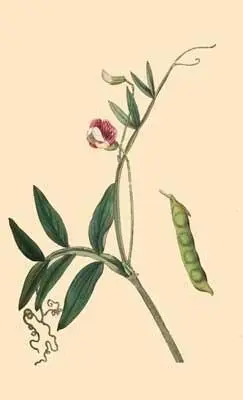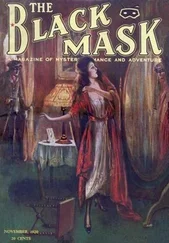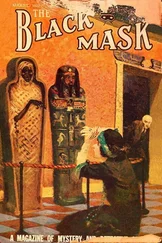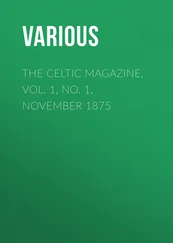Curtis William - The Botanical Magazine, Vol. 08
Здесь есть возможность читать онлайн «Curtis William - The Botanical Magazine, Vol. 08» — ознакомительный отрывок электронной книги совершенно бесплатно, а после прочтения отрывка купить полную версию. В некоторых случаях можно слушать аудио, скачать через торрент в формате fb2 и присутствует краткое содержание. Жанр: foreign_prose, Биология, foreign_edu, на английском языке. Описание произведения, (предисловие) а так же отзывы посетителей доступны на портале библиотеки ЛибКат.
- Название:The Botanical Magazine, Vol. 08
- Автор:
- Жанр:
- Год:неизвестен
- ISBN:нет данных
- Рейтинг книги:3 / 5. Голосов: 1
-
Избранное:Добавить в избранное
- Отзывы:
-
Ваша оценка:
- 60
- 1
- 2
- 3
- 4
- 5
The Botanical Magazine, Vol. 08: краткое содержание, описание и аннотация
Предлагаем к чтению аннотацию, описание, краткое содержание или предисловие (зависит от того, что написал сам автор книги «The Botanical Magazine, Vol. 08»). Если вы не нашли необходимую информацию о книге — напишите в комментариях, мы постараемся отыскать её.
The Botanical Magazine, Vol. 08 — читать онлайн ознакомительный отрывок
Ниже представлен текст книги, разбитый по страницам. Система сохранения места последней прочитанной страницы, позволяет с удобством читать онлайн бесплатно книгу «The Botanical Magazine, Vol. 08», без необходимости каждый раз заново искать на чём Вы остановились. Поставьте закладку, и сможете в любой момент перейти на страницу, на которой закончили чтение.
Интервал:
Закладка:
William Curtis
The Botanical Magazine Vol. 08 / Or, Flower-Garden Displayed
"Much I love
To see the fair one bind the straggling pink,
Cheer the sweet rose, the lupin, and the stock,
And lend a staff to the still gadding pea.
Ye fair, it well becomes you. Better thus
Cheat time away, than at the crowded rout,
Rustling in silk, in a small room, close-pent,
And heated e'en to fusion; made to breathe
A rank contagious air, and fret at whist,
Or sit aside to sneer and whisper scandal."
[253]
Lathyrus Articulatus. Jointed-Podded Lathyrus
Stylus planus, supra villosus, superne latior. Cal. laciniæ superiores 2-breviores.
LATHYRUS articulatus pedunculis subunifloris, cirrhis polyphyllis; foliolis alternis. Linn. Syst. Veg. ed. 14. Murr. p. 662. Ait. Kew. v. 2. p. 41.
CLYMENUM hispanicum, flore vario, siliqua articulata. Tourn. Inst. 396.
LATHYRUS hispanicus, pedunculis bifloris, cirrhis polyphyllis foliolis alternis. Mill. Dict. ed. 6. 4to.

N o253.
The seed-vessels are of the first importance in ascertaining the several species of Lathyrus, some being naked, others hairy, some long, others short, some having a smooth and perfectly even surface, others, as in the present instance, assuming an uneven or jointed appearance.
Of this genus we have already figured three annual species, common in flower-gardens, viz. odoratus , tingitanus , and sativus ; to these we now add the articulatus , not altogether so frequently met with, but meriting a place on the flower-border, as the lively red and delicate white so conspicuous in its blossoms, causes it to be much admired.
It is a native of Italy, and was cultivated at the Chelsea Garden, in the time of Mr. Rand, anno 1739.
It is a hardy annual, requiring support, and rarely exceeding the height of two feet, flowering in July and August, and is readily raised from seeds, which should be sown in the open border at the beginning of April.
[254]
Lopezia Racemosa. Mexican Lopezia
Cal. 4-phyllus. Cor. irregularis, pentapetala, duo superiora geniculata, quintum inferne declinatum, plicatum, ungue arcuata.
LOPEZIA racemosa caule herbaceo ramoso; foliis alternis ovato-lanceolatis, serratis; floribus racemosis. Cavanilles Ic. et descr. Pl.

N o254.
Some plants have a claim on our attention for their utility, some for their beauty, and some for the singularity of their structure, and the wonderful nature of their œconomy; in the last class we must place the present plant, the flowers of which we recommend to the examination of such of our readers as may have an opportunity of seeing them; to the philosophic mind, not captivated with mere shew, they will afford a most delicious treat.
We first saw this novelty in flower, towards the close of the year 1792, at the Apothecaries Garden, Chelsea, where Mr. Fairbairn informed me, that he had that season raised several plants of it from seeds, communicated by Dr. J. E. Smith, who received them from Madrid, to which place they were sent from South-America, and where the plant as Mons. Cavanille informs us, grows spontaneously near Mexico. In October 1793, we had the pleasure of seeing the plant again in blossom in the aforesaid garden, raised from seeds which ripened there the preceding year, but unfortunately from the lateness of their flowering, and the very great injury the plants had sustained from the Cobweb Mite ( Acarus teliarius ) vulgarly called the red Spider, there seemed little prospect that the seed-vessels would arrive at perfection.
The seeds were sown by Mr. Fairbairn, in March, and the plants kept in the green-house till very late in the summer, when to accelerate their blowing, they were removed into the dry stove: it is worthy of remark, that these plants, even late in the autumn, shew no signs of blossoming, but the flowers at length come forth with almost unexampled rapidity, and the seed-vessels are formed as quickly, so that if the flowers were not very numerous, their blossoming period would be of very short duration; future experience may perhaps point out the means of making the plant blow earlier: in Spain, the blossoms appeared later than here, Mons. Cavanille observed them in the Royal Garden, in November and December, most probably in the open ground, as no mention is made of the plants having been preserved from the weather.
It was not till long after our description was taken, that we had an opportunity of seeing Mons. Cavanille's most accurate and elegant work, above quoted, in which this plant is first figured and described; we have selected the most essential parts of his generic character, and adopted his specific description: there is one point, however, in which we differ from him; the part which he regards as the fifth Petal, we are inclined to consider rather as that indescribable something, called by Linnæus the Nectary, it is indeed of little moment whether we call it a Petal or a Nectary, but there are several reasons why, strictly speaking, we cannot regard it as a Petal: in general the number of Petals correspond with the number of the leaves of the Calyx, those of the latter are four; the base of this Nectary originates deeper than the claws of the Petals, springing in fact from the same part as the Filament, its structure, especially the lower part of it, is evidently different from that of the Petals, corresponding indeed as nearly as possible with that of the base of the filament.— Vid. Descer.
Mons. Cavanille was induced to call this plant Lopezia , in compliment to Th. Lopez, a Spaniard 1 1 In honorem Licent. Thomæ Lopez, Burgensis, qui aliquot annos Regii Senatoris munere functus in America, Carolo V. imperante. In patriam reversus breviarium historiæ naturalis novi orbis scripsit sub titulo de tribus elementis aëre, aqua, et terra, MS. apud eundem Muguozium.
.
DESCRIPTION OF THE LOPEZIA
ROOT annual.
STALK five or six feet high, branched almost to the bottom, square, of a deep red colour, smooth towards the bottom, slightly hairy above: Branches like the stalk.
LEAVES alternate, ovate, pointed, toothed on the edges, more so on the larger leaves, slightly beset with soft hairs, veins prominent on the under side, usually running parallel to each other and unbranched: Leafstalks hairy.
FLOWERS numerous, from the alæ of the leaves, growing irregularly on hairy leafy racemi, standing on long slender peduncles, which hang down as the seed-vessels are produced: in this and some others of its characters, the plant shews some affinity to the Circæa .
CALYX: a Perianthium of four leaves, sitting on the Germen, leaves narrow, concave, reddish, with green tips, the lowermost one widely separated from the others, and placed immediately under the Nectary, fig. 1.
Читать дальшеИнтервал:
Закладка:
Похожие книги на «The Botanical Magazine, Vol. 08»
Представляем Вашему вниманию похожие книги на «The Botanical Magazine, Vol. 08» списком для выбора. Мы отобрали схожую по названию и смыслу литературу в надежде предоставить читателям больше вариантов отыскать новые, интересные, ещё непрочитанные произведения.
Обсуждение, отзывы о книге «The Botanical Magazine, Vol. 08» и просто собственные мнения читателей. Оставьте ваши комментарии, напишите, что Вы думаете о произведении, его смысле или главных героях. Укажите что конкретно понравилось, а что нет, и почему Вы так считаете.












